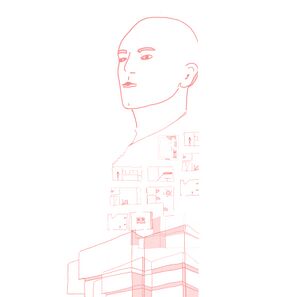Kindergarten, Tilla Bønes
Project description
/Where Arna is a dristrict of Bergen with the fastest collective connection to the centre of the city. It takes only 8 minutes with train, and a railroad expansion in the near future will increase this connection. Bergen is planning this district as a an attractive suburb with high density and urban life. Lone a 12 minutes’ drive from the centre of Arna. In the area, it is mostly single homes, two bigger convenient stores, Lone school and a carpet factory. More housing is planned in the area.
/What + why Bergen commune is planning a new kindergarten at the site of the old Lone school. The kindergarten is being dimensioned for 80 children and 20 employees. With only 75%, Arna is the kindergarten district with the lowest degree of kindergarten coverage. Lone kindergarten will be build for the children belonging to the kindergarten Indre Arnavegen and for the future growth of the area Lone, Haukeland. I would like to explore how we can use the knowledge from neuroscience to design a kindergarten that enhances learning, social skills and that protects the well-being of both children and adults. My main concern are the smaller children in kindergarten, between 0 and 3 years of age. In 2018, 278 578 children attended kindergartens in Norway. 100 610 of these children were under the age of 3 years. 94 136 of those children spend more than 41 hours a week in kindergartens. Surveys show, that those children have a high level of cortisol in their salvia during the day, although the cortisol level should be low. Cortisol is a stress hormone, and indicates that the children are experiencing stress. Stress over longer time can have an impact on the childes brain anatomy and learning capabilities. The smaller children are most vulnerable while the brain is under critical development between 0-2 years.
/How Our brain is the upper part and expanded part of our central nervous system, whose primary function is to relate us to our environment. I would like to explore the link between the users pre-cognitive expectations and multi-sensorial experience of space. This comprises the study of the topological and proxemic relationships of bodies with borders, geometry, light, rhythm, texture, color, materials and sound. Moreover, understanding how emotions will strengthen attention, memory, learning and quality of social relation. Through analysis of interactions between each element of the architectural process and the human sensory system, I am aiming to understand how our bodies are receiving signals from the outside world. Senses such as seeing, hearing, feeling and smelling. Architectural process such as light, topology, organization, use of space, geometry, rhythm, texture and matters, sounds and odors.
Neuroscience and architecture
Text
